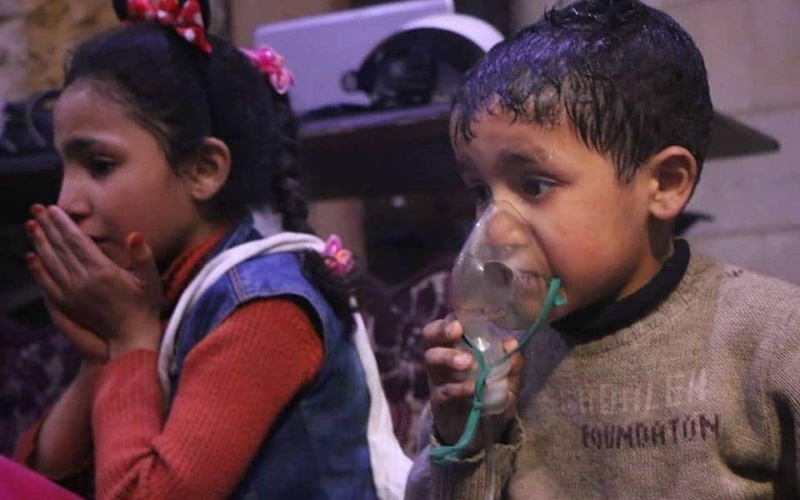Almost five years after it was commanded to dismantle all chemical weapons facilities and give up all stocks, the Assad regime has not complied fully.
The Organization for the Prohibition of Chemical Weapons has issued its latest report on the elimination of the chemical weapons program, ordered after the regime’s August 2013 sarin attacks near Damascus.
The OPCW has verified that the regime finally destroyed the last of 27 declared production facilities, Tel Kurdi and al-Maliha, on June 7 and June 23 — more than four years after the deadline.
Al-Maliha, on the eastern outskirts of Damascus, was the site of ricin production that the regime did not declare until July 2014. Damascus claimed the program was a failure and the toxin was destroyed before it joined the Chemical Weapons Convention. Tel Kurdi was reportedly dormant since autumn 2013.
But despite the belated compliance, the regime has undeclared production facilities for air-dropped chlorine bombs, rockets armed with chlorine and sarin, and hand grenades and aerial bombs filled with sarin. These have been used for numerous chlorine attacks and at least two sarin assaults since 2014.
Latest @OPCW report on elimination of Syria’s CW program is out and I have a few observationshttps://t.co/t88ctieXZm
— Gregory Koblentz (@gregkoblentz) July 26, 2018
The OPCW implicitly refers to this by saying that the regime has not acted to “resolve all identified gaps, inconsistencies, or discrepancies” over the chemical weapons program. And the organization says those gaps have increased since 2014.
The inspectors specifically name the facilities at Barzah and Jamraya near Damascus. They say that the necessary inspection will be quicker to carry out now because of April’s US attacks on the complexes, a week after the Assad regime used chemical weapons on the town of Douma near Damascus.
The OPCW said it is also hoping to conduct inspections of undeclared sites associated with chlorine-laden barrel bombs.
The inspectors were recently given the mandate by UN members — after an eight-month suspension because of a Russion veto — to assign responsibility for chemical attacks. A report by the OPCW on how it will carry out the mission is due by July 28.
Hat tip to Professor Gregory Koblentz of George Mason Unversity for his commentary on the report


Scott, the sarin attack you said Assad was responsible for in August 2013, according to ex CIA analyst Ray McGovern, the work of a Jihadi group? Obama’s line re chemical weapons use was crossed. Assad was blamed by the politicians – John Kerry was it? Let’s bomb Syria but the US military/intel told Obama that it wasn’t Assad – wrong type of Sarin. Hence Obama held off the bombing on that occasion. You know better than Ray McGovern.
He also made an interesting point. The US gov started making up their own ‘intel’ reports to suit their political agenda when the real intel contradicted that agenda.
Also talking of chemical weapons didn’t the leaked OPCW report suggested that the supposed chemical weapons attack that US/UK/France bombed Syria for last time was staged by Jihadi group. Then there was the leaked info about staged goings on (white helmets) by a BBC team person filming in Syria? Have you written about the above? I tried to do a search on this site, couldn’t find anything.
Chris,
Very hard to make any sense of your post, but it is riddled with factual errors and false assertions.
Do have a full read of our news and analysis since 2013 (and, before that, on our predecessor Enduring America), using the search terms “chemical” and “attack”.
S.
Iraq WMD redux. Demanding that Assad declare something no one has proven exists.